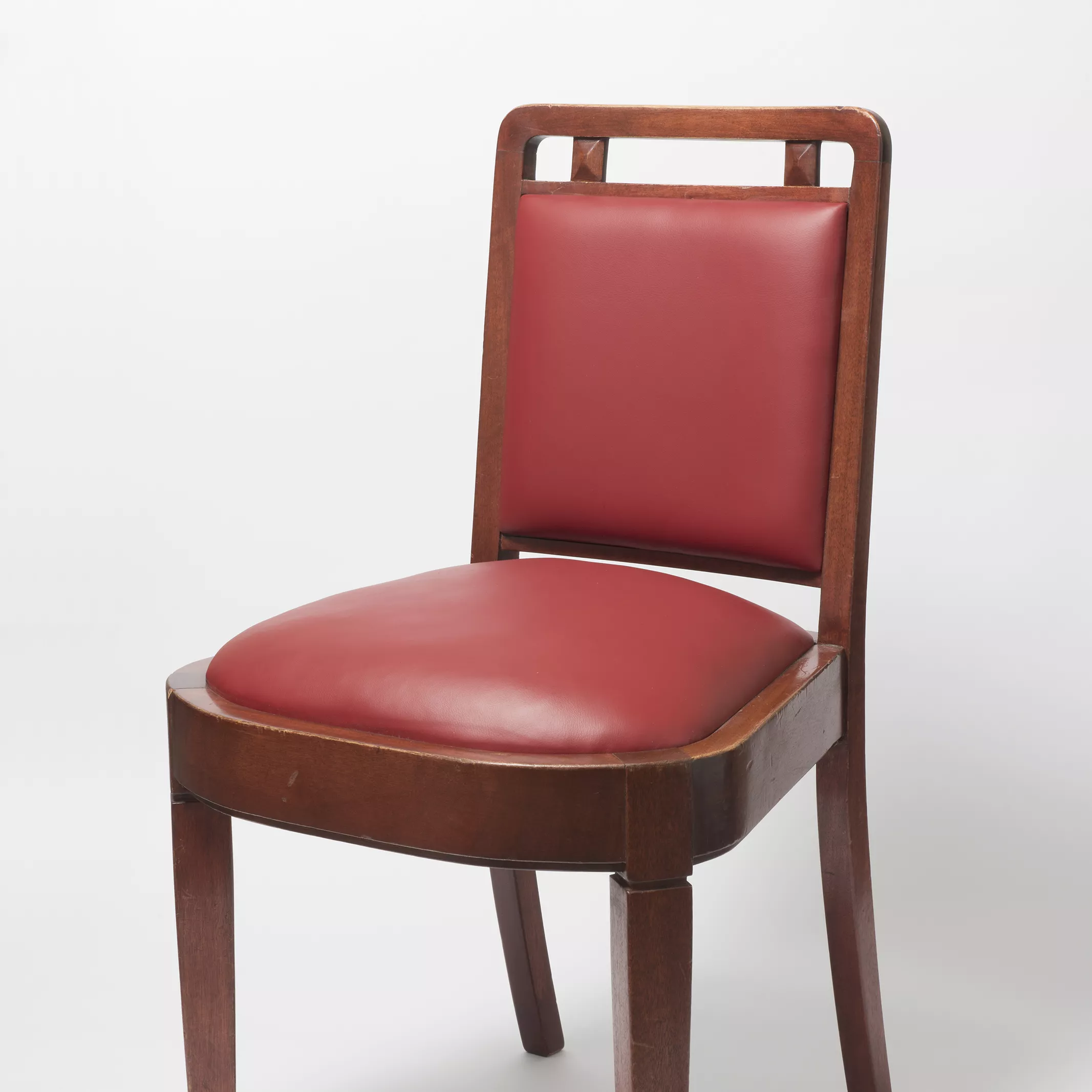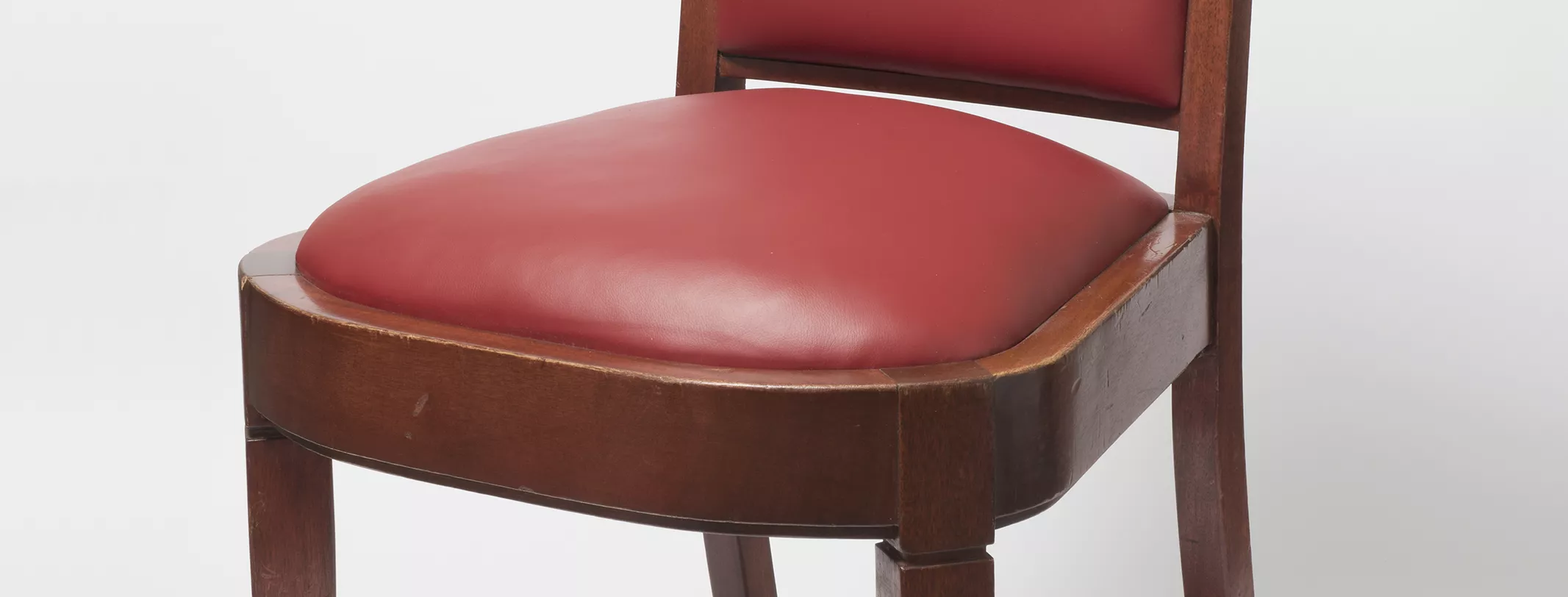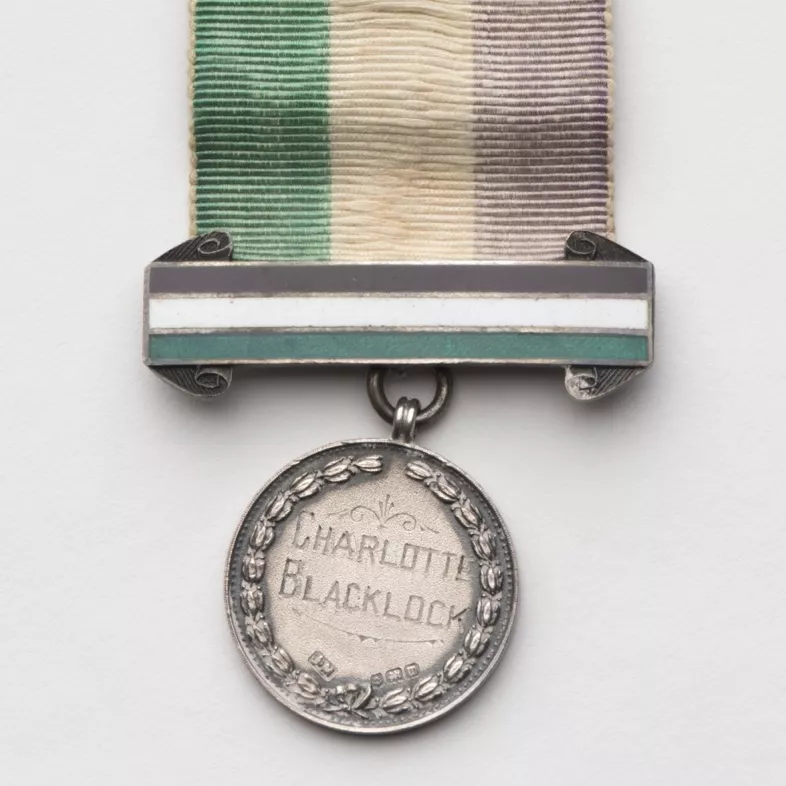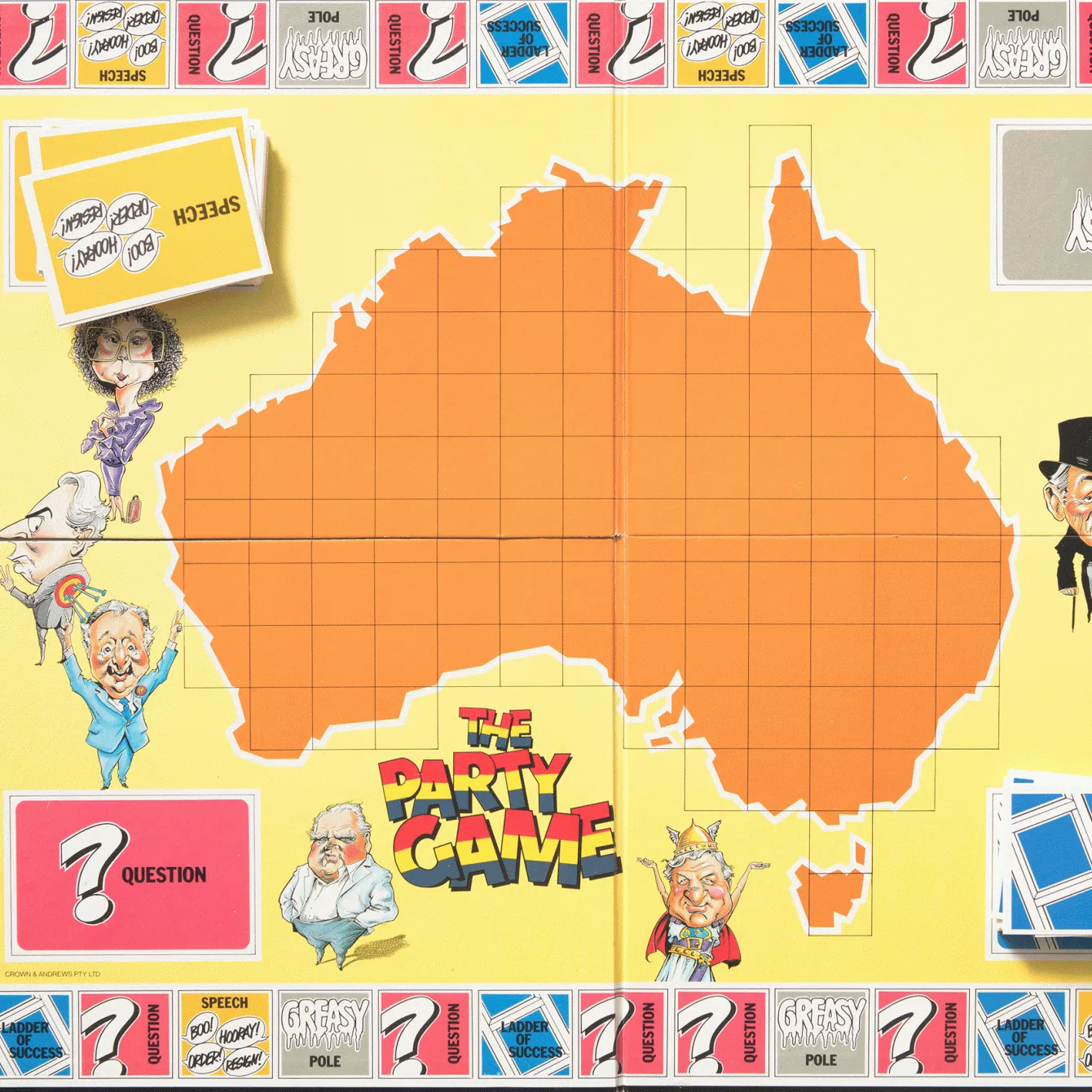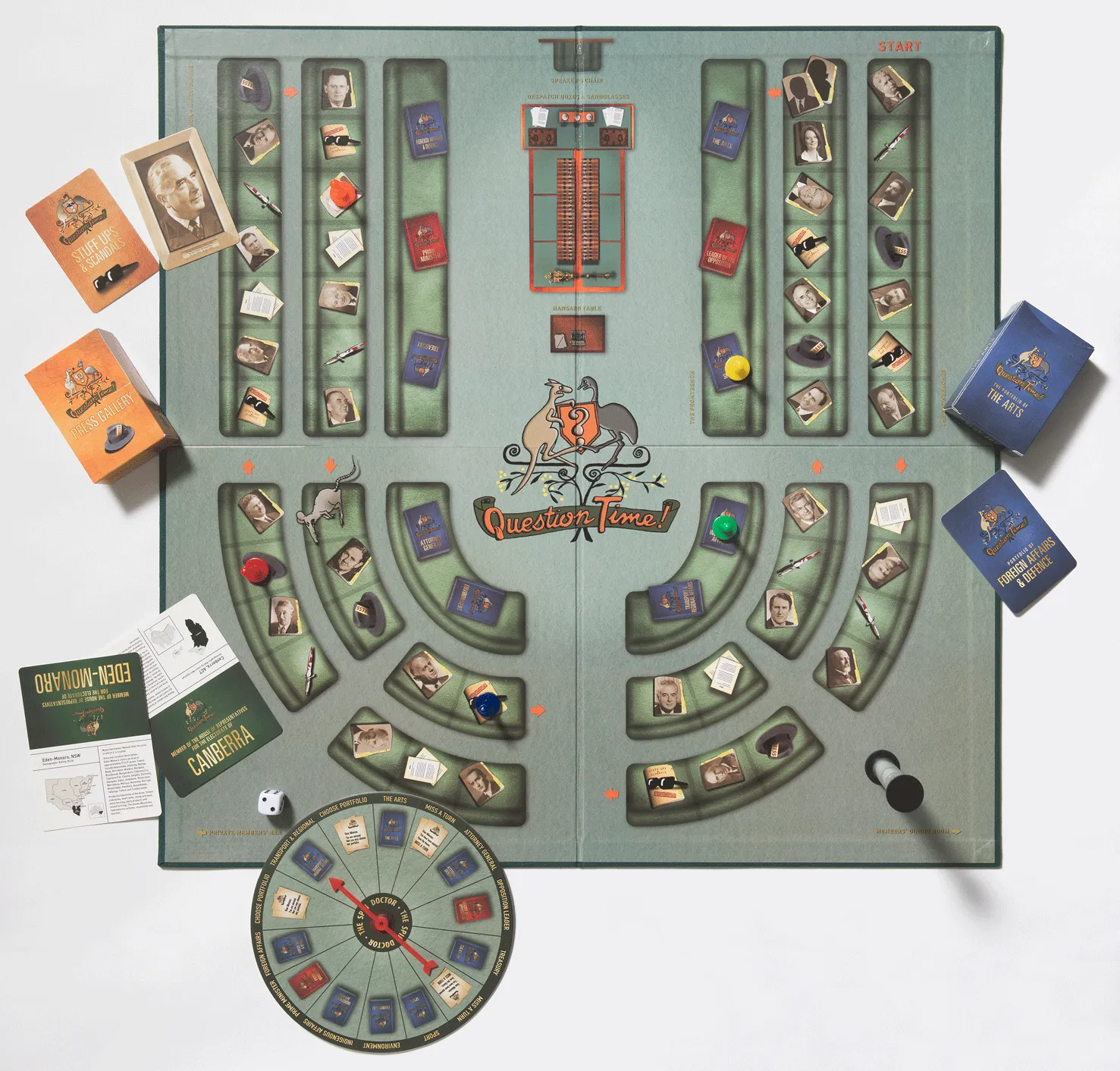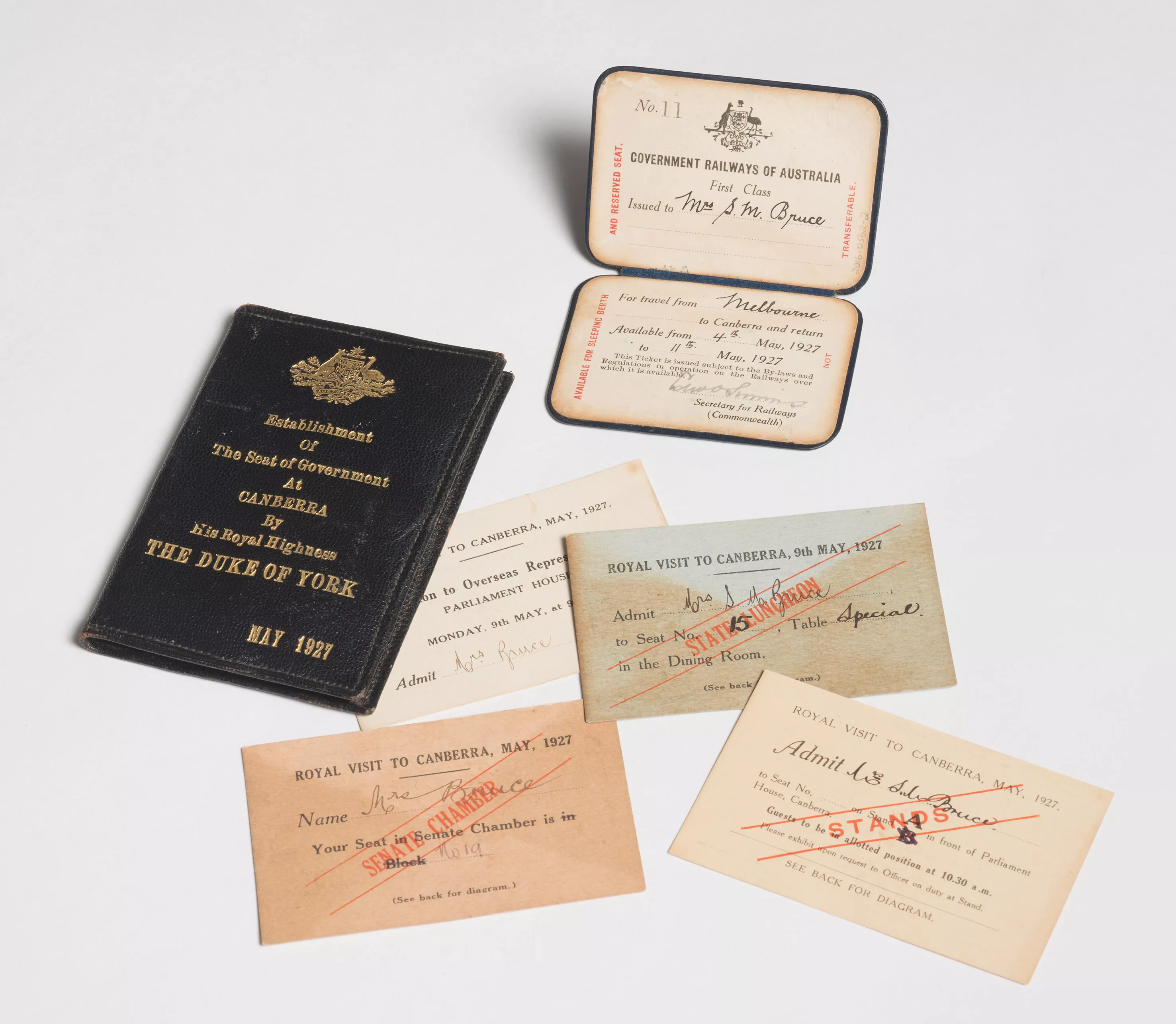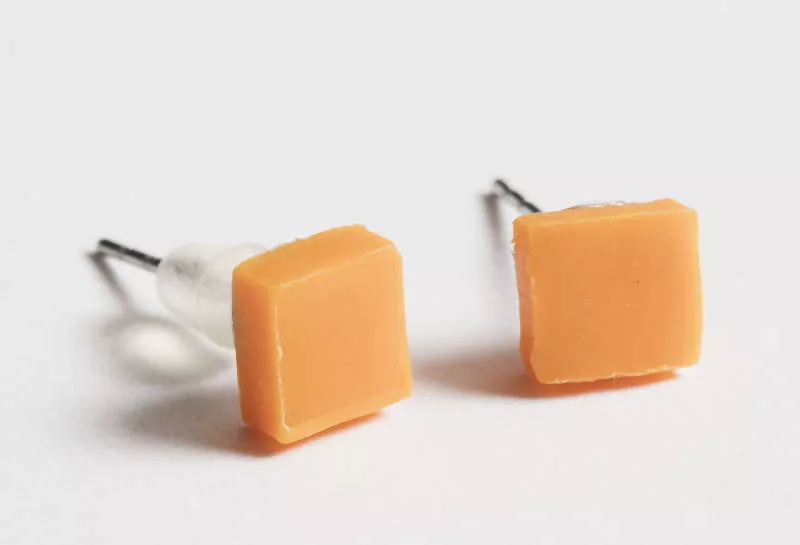Dining room chair
Plain, functional and designed specifically for Parliament House.

These chairs were designed for the dining room of Parliament House in a plain, functional style. Made of Queensland maple, which is sometimes referred to as 'silkwood', they feature an upholstered seat and back, and the small pyramids along the top rail used by diners to grasp and draw the chair away from the table are the only decorative embellishment.
The order for the chairs was so large their fabrication was handled by six firms – Myer Emporium Pty Ltd, W H Rocke and Co, Anthony Hordern and Sons, Beard Watson & Co, Bebarfalds Ltd and A Pengelly and Co.
This is just one of the 267 dining chairs in our collection designed specifically by the Architects Department of the Federal Capital Commission – a group of draftsmen led by principal architect John Smith Murdoch.
When the newly-built chairs arrived, they were dispatched to the dining and recreation rooms used by parliamentarians, guests and staff in the south wing of Parliament House – collectively known as the Commonwealth Parliamentary Refreshment Rooms.
The chairs were immediately pressed into service for the State Luncheon on the day the building was officially opened, 9 May 1927, when the Duke and Duchess of York and guests enjoyed a three-course lunch prepared by the Parliament House chefs.
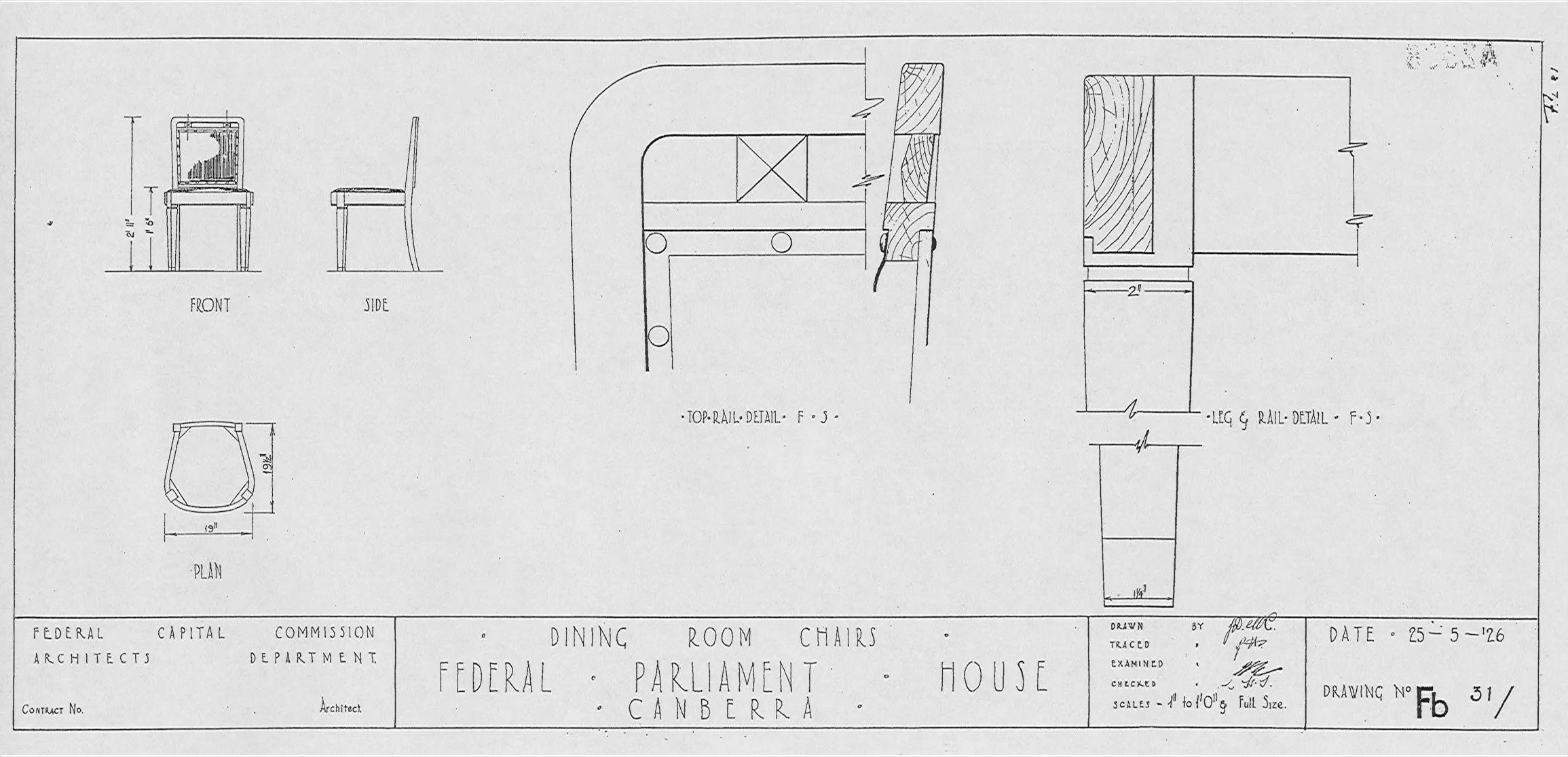
Technical drawing of the dining room chairs for Parliament House prepared by the Architects Department, Federal Capital Commission, 1926.

Hundreds of dining chairs were handcrafted for the Members' Dining Rooms and other areas in the Commonwealth Parliamentary Refreshment Rooms, 1927. Photograph by William J Mildenhall/National Archives of Australia: A3560, 3423
The Refreshment Rooms and these dining chairs also hosted other Royal visits, State Receptions and formal dinners including the State Banquet in 1954 for the Royal tour and the 50th birthday celebration for Prime Minister Malcolm Fraser in 1980.
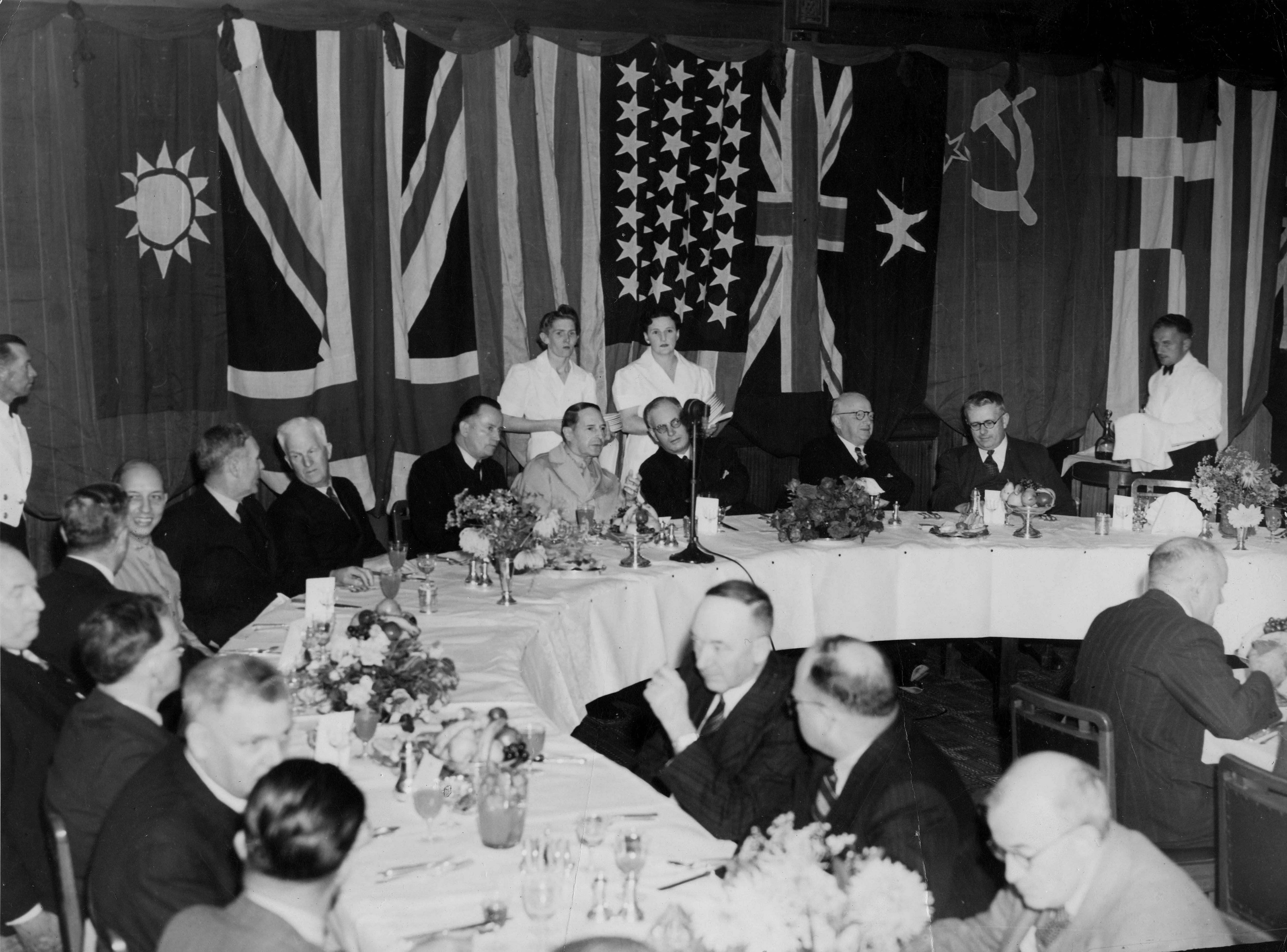
US General Douglas MacArthur, centre in a light-coloured uniform, visited Parliament House on 26 March 1942 for meetings and stayed on for a meal in the Members’ Dining Room. Photograph courtesy of Joy Hoffman /Museum of Australian Democracy Collection

Commonwealth Parliamentary Refreshment Room staff before a dinner celebrating 50 years since Federation in the Members’ Dining Room, 1951. Photograph courtesy of Joan Frost /Museum of Australian Democracy Collection
What are the Refreshment Rooms in Parliament House?
The Refreshment Rooms were designed to provide everyday in-house dining and recreation facilities, a critical function in the early years when there were very few other dining options for parliamentarians and parliamentary staff close to Parliament House. They also provided some measure of comfort in compensation for long hours of work and lengthy periods away from home.

